Welcome to the world of tarot card reading! If you’re a beginner looking to gain insight into your past, present, and future, the Past-Present-Future spread is a perfect place to start. This powerful three-card spread offers guidance and clarity, allowing you to uncover the hidden messages of the universe. In this comprehensive guide, we will walk you through each step of the spread, from choosing the right tarot deck to interpreting the cards and putting it all together. Get ready to unlock the secrets of the past, make sense of the present, and embrace the possibilities of the future. Let’s dive in!
Contents
- What is the Past-Present-Future Spread?
- Choosing the Right Tarot Deck
- Preparing for the Reading
- Understanding the Positions
- Interpreting the Cards
- Putting It All Together
- Troubleshooting Common Challenges
- Practicing with Sample Readings
- Developing Your Intuition
- Conclusion
-
Frequently Asked Questions
- 1. Can the Past-Present-Future spread only be done with tarot cards?
- 2. How many cards do I need for a Past-Present-Future spread?
- 3. Can I ask specific questions during a Past-Present-Future reading?
- 4. How often should I do a Past-Present-Future reading?
- 5. Can I do a Past-Present-Future reading for someone else?
- 6. What if I don’t resonate with the messages from the cards?
- 7. Can the Future card predict exactly what will happen?
- 8. Can the Past card bring up painful memories?
- 9. Can I use the Past-Present-Future spread for decision-making?
- 10. How can I enhance my intuition while doing a Past-Present-Future reading?
- References
What is the Past-Present-Future Spread?
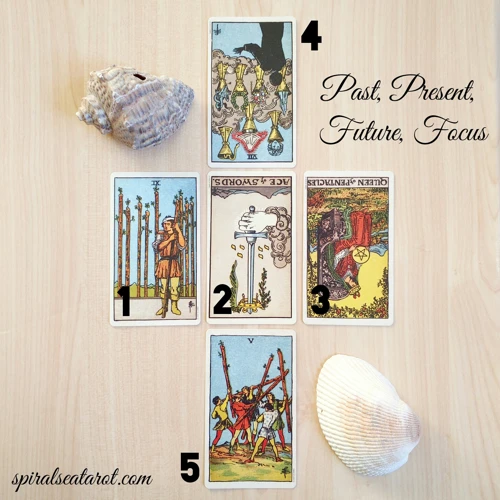
The Past-Present-Future spread is a popular tarot card reading method that provides insights into different time periods of a person’s life. This spread consists of three cards, each representing the past, present, and future. The past card reflects past experiences, events, or influences that have shaped the present situation. It offers valuable wisdom and lessons to learn from. The present card reveals the current circumstances and energies surrounding the individual. It gives a snapshot of their immediate reality. The future card offers a glimpse into potential outcomes or possibilities that may unfold in the future based on the present trajectory. Together, these three cards create a holistic view of the individual’s journey, allowing them to gain a deeper understanding of their past, make decisions in the present, and navigate the future with clarity and awareness. By tapping into the power of the Past-Present-Future spread, you can gain valuable insights that can guide you on your path of self-discovery and personal growth.
Choosing the Right Tarot Deck
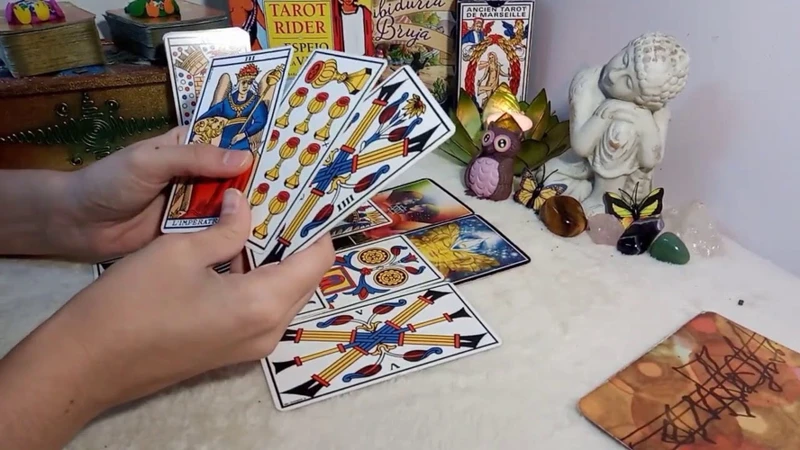
Choosing the right tarot deck is an important step in performing a successful Past-Present-Future spread. Each tarot deck has its own unique style, symbolism, and energy, so it’s essential to find one that resonates with you and your intuitive abilities. There are numerous tarot decks available, ranging from traditional Rider-Waite-Smith decks to modern and eclectic designs. When selecting a deck, consider the artwork and imagery – does it speak to you on a personal level? Pay attention to the overall vibe of the deck and whether it aligns with the energy you wish to channel during your readings. Additionally, consider the size and handling of the cards. Some decks have larger dimensions, while others are more compact. It’s crucial to choose a deck that feels comfortable in your hands and allows you to easily connect with the cards. Whether you prefer classic or contemporary designs, the key is to choose a deck that you feel a deep connection with, as this will enhance your intuition and understanding of the messages within the cards. Remember, tarot is a personal journey, and the right deck will truly amplify your experience.
Preparing for the Reading
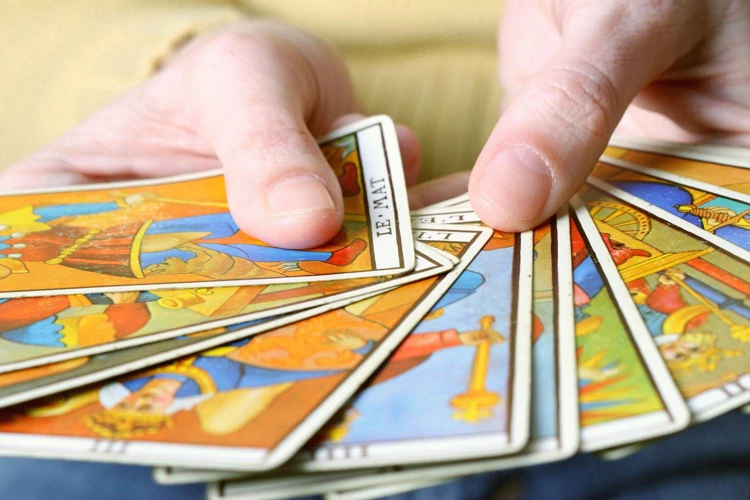
Preparing for a tarot card reading is an essential step to ensure a meaningful and accurate experience. Before diving into the Past-Present-Future spread, make sure you have gathered the necessary tools. This typically includes a tarot deck of your choice and a comfortable space where you can focus and connect with your intuition. Creating the right environment is crucial for a successful reading, so consider lighting candles, playing soft music, or incorporating any other elements that help you relax and attune to the energy of the cards. By taking the time to gather your tools and create a conducive atmosphere, you set the stage for a transformative and insightful reading.
Gathering the Necessary Tools
Gathering the necessary tools is an important step in preparing for a tarot card reading using the Past-Present-Future spread. To begin, you will need a tarot deck that resonates with you and your intuition. There are numerous tarot deck options available, each with its own unique symbolism and energy. Choose a deck that speaks to you on a personal level, whether it’s a traditional Rider-Waite deck or a modern-themed deck. Additionally, you may want to have a journal or notebook handy to record your readings and insights. This can help you track your progress and reflect on the messages received. Some individuals also like to use crystals, candles, or incense to create a sacred space for their readings. These tools can enhance the energy and ambiance of the reading environment. Remember, the most important tool for a successful reading is your own intuitive connection with the cards. So trust yourself and gather the tools that support your unique practice.
Creating the Right Environment
When it comes to performing a tarot card reading using the Past-Present-Future spread, creating the right environment is crucial. This helps to create a sacred and focused space that enhances your connection with the cards and your intuition. Here are some key steps to consider:
- Cleanse the space: Before you start the reading, it’s essential to clear the energy of the space. You can do this by smudging with sage or using cleansing crystals like amethyst or black tourmaline.
- Set the mood: You can enhance the energy by lighting candles or incense, playing soft meditation music, or using essential oils. Choose scents or sounds that resonate with you and create a calm and peaceful atmosphere.
- Eliminate distractions: Find a quiet area where you can focus without interruptions. Turn off your phone or put it on silent mode, and let others in your household know that you need some undisturbed time.
- Clear your mind: Take a few moments to center yourself and clear your mind of any worries or distractions. You can do this through deep breathing exercises or meditation.
- Create a ritual: To further enhance the atmosphere, you can incorporate a personal ritual into your tarot card reading. This can be as simple as saying a prayer or setting an intention for the reading.
By creating the right environment, you are setting the stage for a meaningful and focused tarot card reading. This allows you to connect more deeply with the cards and tap into your intuitive abilities, resulting in a more insightful interpretation of the Past-Present-Future spread.
Understanding the Positions
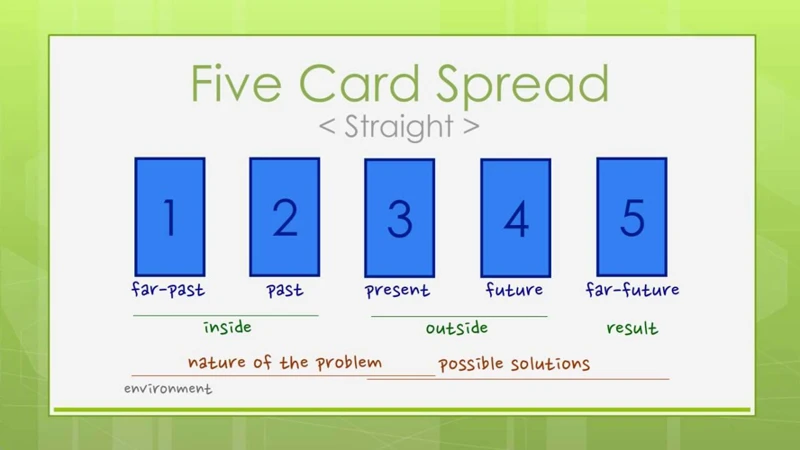
Understanding the positions in the Past-Present-Future spread is key to unlocking its full potential. Each position represents a specific time period and has its own significance in the reading. The Past position reflects past experiences, events, or influences that have shaped the present situation. It provides valuable insights and lessons from the past that can inform your present choices and actions. The Present position represents the current circumstances and energies surrounding you. It offers a snapshot of your immediate reality and the factors at play in your life. The Future position gives a glimpse into potential outcomes or possibilities that may unfold based on the present trajectory. It allows you to gain foresight and make informed decisions for the future. By understanding the meanings and nuances of each position, you can explore the interconnectedness of the past, present, and future, and gain deeper insights into your life’s journey.
The Past Position
- The Past Position in the Past-Present-Future spread is the first card that represents the individual’s past experiences, events, or influences that have shaped their current situation. This card offers valuable insight into the lessons learned, patterns established, and the impact of past choices. When interpreting the Past Position, it is important to pay attention to the symbolism, imagery, and overall energy of the card. Consider the emotions and memories it evokes, as they can provide clues to the past events that have shaped the present. Reflect on how the card’s meaning aligns with the individual’s journey and the question or intention they have brought to the reading.
The Present Position
The Present Position in the Past-Present-Future spread represents the current circumstances and energies surrounding the individual. This card gives valuable insights into the person’s immediate reality and provides a snapshot of their present situation. When interpreting the card in this position, it’s important to consider the symbolism, imagery, and meaning of the card. Each tarot card has a unique message and conveys different energies. For example, if the card drawn is the Ace of Cups, it signifies new beginnings, emotional fulfillment, and love. On the other hand, if the card is the Five of Swords, it suggests conflicts, disagreements, and challenges. The Present card serves as a guide, helping the individual make decisions and take action in their current circumstances. Additionally, it can provide valuable information about the energies and influences that need to be considered when shaping the future. Understanding the significance of the Present card is crucial in gaining a comprehensive understanding of the individual’s journey and guiding them towards a path of self-discovery and growth.
The Future Position
The Future Position in the Past-Present-Future spread represents the potential outcomes and possibilities that may unfold in the individual’s future based on their current trajectory. This card offers a glimpse into what lies ahead and can provide guidance on the path the individual is currently on. When interpreting the Future Position card, it is important to consider the symbolism, imagery, and meanings associated with the specific tarot card drawn. Each card in the tarot deck has its own unique interpretation, and understanding the messages it holds can provide valuable insights into what the future may hold. It is important to keep in mind that the future is not set in stone, and the card drawn in this position is not an absolute prediction. Rather, it serves as a guide, offering possibilities and potential outcomes based on the energy and circumstances of the present moment. It is essential to approach the Future Position with an open mind and a sense of curiosity about the different paths that may lie ahead. By exploring the meaning of the card drawn in this position and considering its relevance to the individual’s current situation, one can gain a deeper understanding of the potential future outcomes and make informed decisions moving forward. To further enhance your tarot reading skills and explore other tarot spreads, you may want to check out the Interpreting Meaningful Connections Tarot article for more insights.
Interpreting the Cards
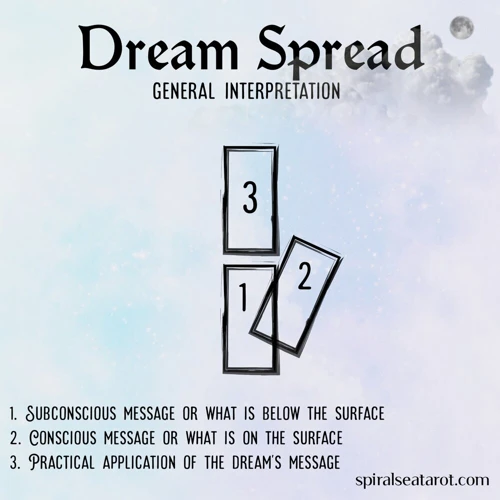
Interpreting the cards in a Past-Present-Future spread is an art that combines intuition, knowledge of tarot symbolism, and an understanding of the individual’s unique circumstances. Each card holds its own meaning and message, and when placed in specific positions, they create a narrative that tells a story. Major Arcana cards, such as The Fool or The Lovers, carry significant archetypal energies and often represent major life lessons or transformative experiences. Minor Arcana cards, divided into four suits (Cups, Pentacles, Swords, and Wands), provide more detail and nuance to the reading. Each suit carries its own elemental energy and portrays different aspects of life. For example, the Suit of Cups represents emotions, relationships, and intuition, while the Suit of Pentacles signifies material abundance, career, and practical matters. It’s important to consider both the individual meanings of the cards and the overall theme or message that emerges from their combination. Remember to trust your intuition and allow the symbols and imagery of the cards to guide you in delivering meaningful insights to the seeker. By honing your interpretive skills, you can unlock the hidden layers of wisdom the tarot holds and provide valuable guidance to those seeking clarity about their past, present, and future.
Major Arcana Cards
Major Arcana cards are a significant part of the tarot deck and hold profound symbolism and meaning. These cards represent powerful archetypes and universal themes that transcend time and culture. They are often seen as the highlights or major events in a person’s life. In the Past-Present-Future spread, Major Arcana cards can offer deep insights and guidance. Each card in the Major Arcana has its own unique significance. For example, the Fool represents new beginnings and taking risks, while the Death card symbolizes transformation and endings. The interpretation of Major Arcana cards is often subjective and can vary depending on the reader and the surrounding cards. It is essential to consider the imagery, symbols, and traditional meanings associated with each card to unlock their messages and gain a deeper understanding of their impact on the past, present, and future. To explore more tarot spreads that involve the Major Arcana, you can check out the Wisdom of Past Lives Spread or the Investigating Patterns and Themes over Time with the Past-Present-Future Tarot Spread. Embrace the wisdom and insights offered by these powerful cards to enhance your tarot readings and gain a deeper connection with the universal energies.
Minor Arcana Cards
When it comes to tarot card readings, the Minor Arcana cards play a vital role in providing specific details and insights into a person’s life. Unlike the Major Arcana cards, which represent significant life events and archetypal energies, the Minor Arcana cards focus on the everyday challenges, experiences, and influences that shape our lives. The Minor Arcana is divided into four suits: Cups, Pentacles, Swords, and Wands. Each suit represents a different aspect of life and carries its own unique symbolism and energy. The Suit of Cups is associated with emotions, relationships, and matters of the heart. It reflects our feelings, intuition, and creativity. The Suit of Pentacles is connected to the material world, including finances, career, and physical well-being. It signifies abundance, prosperity, and the practical aspects of life. The Suit of Swords represents thoughts, communication, and intellectual pursuits. It reflects our mental state, conflicts, and the power of words. Lastly, the Suit of Wands is associated with passion, inspiration, and personal growth. It signifies our ambitions, energy, and the pursuit of our goals. Understanding the Minor Arcana cards and their meanings is crucial in interpreting the Past-Present-Future spread accurately. Each card within the suits provides specific insights and guidance related to the individual’s situation and journey. By paying attention to the details and symbolism of these cards, you can unlock deeper layers of understanding and uncover valuable messages from the tarot.
Suit of Cups
The Suit of Cups is one of the four suits in a standard tarot deck, and it represents the element of water. It is associated with emotions, intuition, relationships, and matters of the heart. When interpreting the cards in the Suit of Cups, it is important to consider the emotional aspects and the deep connections between the cards. The Ace of Cups, for example, represents new beginnings and emotional fulfillment, signaling the start of a new relationship or the awakening of deep emotional connections. The Two of Cups signifies harmony and balance in relationships, indicating a strong bond between two people. The Three of Cups represents celebration, joy, and friendship, suggesting a time of happiness and social connections. The Suit of Cups also includes the King, Queen, Knight, and Page of Cups, each representing different aspects of emotions and relationships. The King of Cups represents emotional maturity and control, while the Queen of Cups symbolizes compassion and nurturing. The Knight of Cups signifies romance, charm, and idealism, while the Page of Cups represents creative inspiration and intuitive messages. The Suit of Cups is a powerful and introspective suit that invites us to explore our emotional landscapes and navigate the depths of our relationships.
Suit of Pentacles
- Ace of Pentacles: The Ace of Pentacles represents new beginnings, abundance, and material prosperity. It signifies opportunities and the potential for financial growth and stability. This card often signifies a solid foundation and the manifestation of goals and aspirations.
- Two of Pentacles: The Two of Pentacles reflects balance and adaptability. It symbolizes the need to juggle multiple priorities and find harmony in managing responsibilities. It encourages flexibility and resourcefulness in dealing with financial matters.
- Three of Pentacles: The Three of Pentacles represents collaboration and teamwork. It signifies a time for cooperation and utilizing the strengths of others to achieve shared goals. This card encourages seeking advice and expertise from others in order to create successful outcomes.
- Four of Pentacles: The Four of Pentacles symbolizes stability and security. It indicates a desire for financial stability and the need to hold onto resources. This card can also suggest the importance of finding a balance between saving and enjoying the material comforts of life.
- Five of Pentacles: The Five of Pentacles signifies hardship and financial struggle. It indicates a period of lack or loss, both materially and emotionally. This card urges the individual to seek support and find comfort in others during challenging times.
- Six of Pentacles: The Six of Pentacles represents generosity and charity. It symbolizes the act of giving and receiving, and the importance of sharing resources. This card encourages acts of kindness and helping others in need.
- Seven of Pentacles: The Seven of Pentacles reflects patience and perseverance. It represents a time of waiting and assessing progress. This card reminds the individual to remain focused and committed to their long-term goals, even if the desired outcomes take time to materialize.
- Eight of Pentacles: The Eight of Pentacles signifies dedication and craftsmanship. It represents putting in hard work and effort to master a skill or achieve a goal. This card encourages continuous learning and honing of one’s abilities.
- Nine of Pentacles: The Nine of Pentacles symbolizes independence and self-sufficiency. It represents enjoying the fruits of one’s labor and taking pride in personal achievements. This card encourages the individual to appreciate their own worth and enjoy the rewards of their hard work.
- Ten of Pentacles: The Ten of Pentacles represents abundance and wealth. It symbolizes financial security, family heritage, and a solid foundation. This card signifies long-term success, both financially and emotionally.
- Page of Pentacles: The Page of Pentacles signifies new opportunities and the potential for growth. It symbolizes curiosity, enthusiasm, and a willingness to learn. This card encourages the individual to embrace new ventures and explore their passions.
- Knight of Pentacles: The Knight of Pentacles represents responsibility and diligence. It reflects the mindset of hard work, reliability, and perseverance. This card urges the individual to stay focused on their goals and commitments.
- Queen of Pentacles: The Queen of Pentacles symbolizes practicality and nurturing energy. It represents a person who is grounded, reliable, and nurturing. This card encourages the individual to take care of themselves and others, as well as enjoy the material comforts of life.
- King of Pentacles: The King of Pentacles represents wealth, abundance, and success. It symbolizes a person who is financially secure and has a strong understanding of managing resources. This card signifies a time of stability and prosperity.
Suit of Swords
- Ace of Swords: The Ace of Swords represents new beginnings, mental clarity, and the potential for breakthroughs. It signifies a fresh perspective and the ability to cut through confusion and obstacles. This card urges you to embrace the power of your thoughts and ideas.
- Two of Swords: The Two of Swords represents choices, indecision, and a need for balance. It indicates a state of inner conflict and the need to make a difficult decision. This card suggests that careful consideration and finding middle ground are necessary to move forward.
- Three of Swords: The Three of Swords symbolizes heartbreak, emotional pain, and sorrow. It is often associated with loss, betrayal, or separation. This card suggests that healing and emotional release are needed to move forward and find resolution.
- Four of Swords: The Four of Swords represents rest, recuperation, and solitude. It signifies a need for a period of reflection and rejuvenation. This card encourages you to take a break and recharge your energy before moving forward.
- Five of Swords: The Five of Swords represents conflict, competition, and power struggles. It signifies a situation where winning comes at a cost and there may be winners and losers. This card advises you to choose your battles wisely and consider the long-term consequences of your actions.
- Six of Swords: The Six of Swords represents transition, moving on, and finding peace. It signifies leaving behind a difficult situation or emotional baggage and embarking on a journey towards a better future. This card offers hope and reassurance that brighter days are ahead.
- Seven of Swords: The Seven of Swords represents deception, dishonesty, and hidden agendas. It suggests that someone may be acting in a deceitful or manipulative manner. This card urges you to be cautious and trust your instincts to avoid being taken advantage of.
- Eight of Swords: The Eight of Swords represents feelings of restriction, self-imposed limitations, and being trapped. It indicates a state of powerlessness and fear. This card encourages you to challenge your beliefs and find the strength to break free from negative patterns.
- Nine of Swords: The Nine of Swords represents anxiety, worry, and sleepless nights. It signifies racing thoughts and emotional turmoil. This card suggests seeking support, self-care, and finding healthy ways to address and alleviate your worries.
- Ten of Swords: The Ten of Swords represents pain, endings, and the need for release. It signifies the culmination of a challenging situation or a significant betrayal. This card reminds you that even in the darkest moments, there is the potential for rebirth and the opportunity to start anew.
Suit of Wands
The Suit of Wands is one of the four suits in a tarot deck and represents the element of fire. This suit is associated with passion, creativity, inspiration, and the energy to take action. When interpreting the cards in the Suit of Wands, it is important to consider their individual meanings as well as their position within the Past-Present-Future spread.
The Ace of Wands: The Ace of Wands signifies new beginnings, creative potential, and opportunities. It represents the spark of inspiration and the desire for growth and transformation.
The Two of Wands: The Two of Wands symbolizes planning, making decisions, and setting goals. It indicates a need for vision and taking calculated risks to achieve success.
The Three of Wands: The Three of Wands represents expansion, progress, and exploration. It suggests that your efforts are paying off and encouraging you to explore new horizons.
The Four of Wands: The Four of Wands signifies celebration, harmony, and a sense of accomplishment. It represents a time of joy and stability in your endeavors.
The Five of Wands: The Five of Wands represents competition, conflicts, and challenges. It indicates the need for negotiation, compromise, and finding common ground with those around you.
The Six of Wands: The Six of Wands symbolizes victory, recognition, and public acclaim. It suggests that your hard work and efforts have paid off, and you are being celebrated for your achievements.
The Seven of Wands: The Seven of Wands represents perseverance, determination, and standing your ground. It signifies a need to defend your beliefs and assert yourself against opposition.
The Eight of Wands: The Eight of Wands signifies fast progress, movement, and swift action. It suggests that opportunities are coming your way, and you need to seize them without hesitation.
The Nine of Wands: The Nine of Wands represents resilience, courage, and perseverance in the face of challenges. It suggests that you have the strength and determination to overcome obstacles and reach your goals.
The Ten of Wands: The Ten of Wands symbolizes burden, responsibility, and feeling overwhelmed. It indicates a need to delegate tasks and release some of the load to find relief.
The Page of Wands: The Page of Wands represents enthusiasm, curiosity, and new beginnings. It suggests that you are ready to embark on a new adventure or explore a creative endeavor.
The Knight of Wands: The Knight of Wands symbolizes passion, energy, and ambition. It indicates a time of action and movement, urging you to pursue your goals with confidence and determination.
The Queen of Wands: The Queen of Wands represents leadership, creativity, and independence. It suggests that you have the ability to take charge of your own life and inspire others.
The King of Wands: The King of Wands symbolizes passion, personal power, and charisma. It represents someone who is confident, influential, and takes charge of their destiny.
The Suit of Wands offers valuable insights and guidance within the Past-Present-Future spread, helping you harness your creative energy, take inspired action, and pursue your passions with confidence.
Putting It All Together
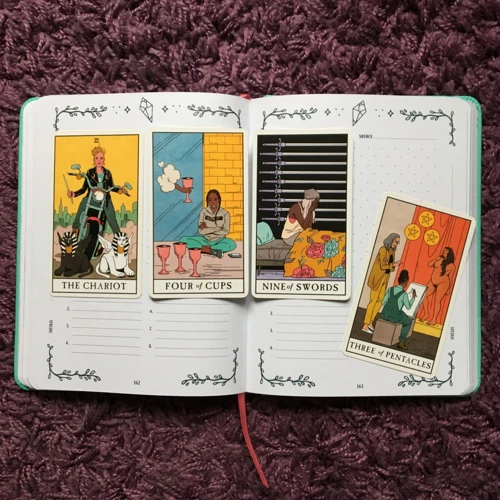
Putting It All Together involves taking the information gathered from the Past-Present-Future spread and synthesizing it into a coherent narrative. Once you have interpreted the individual meanings of each card, it’s time to look for connections and patterns among them. Are there any recurring symbols or themes? Do the cards complement or contradict each other? Examining the cards as a whole can provide deeper insights and a more nuanced understanding of the reading. One helpful technique is to create a story or narrative that incorporates the messages from each card. This narrative can reveal overarching themes, lessons, or potential outcomes. You can also consider the elemental associations of the cards or the numerological significance. Taking the time to put all the pieces together can enhance the depth and accuracy of your interpretation. Remember, tarot readings are not black and white; there is often a level of ambiguity and multiple possible interpretations. Trust your intuition and let the cards guide you in weaving together the story that resonates most with you.
Troubleshooting Common Challenges
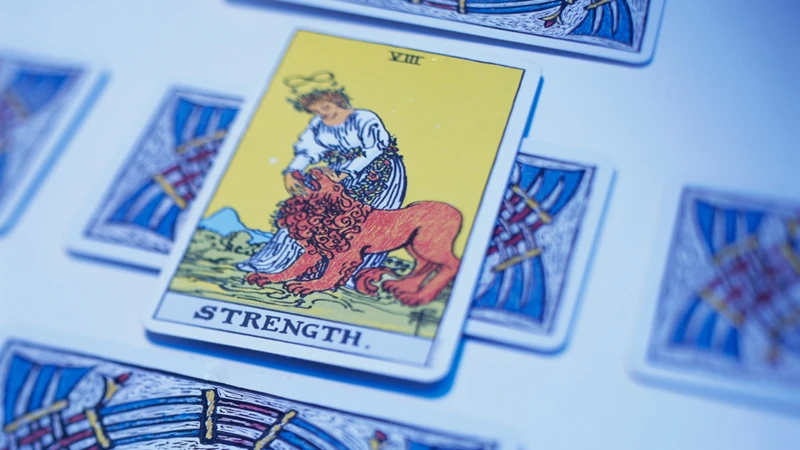
While performing a Past-Present-Future spread, there are common challenges that beginners may encounter. One challenge is the presence of multiple reversed cards. When a card appears upside down, it can indicate blocked energy or obstacles in that area of life. In this situation, it is important to pay attention to the reversed card’s meaning and explore how it may be influencing the overall reading. Another challenge is conflicting card meanings. Occasionally, the cards may provide contrasting messages, making it difficult to interpret the reading. In such instances, it is helpful to consider the cards’ individual meanings, the context of the reading, and rely on intuition for guidance. By acknowledging and addressing these challenges, beginners can navigate through the intricacies of the Past-Present-Future spread more effectively and derive meaningful insights from their tarot card readings.
Multiple Reversed Cards
When performing a Past-Present-Future tarot card reading, it is not uncommon to encounter multiple reversed cards in the spread. Reversed cards indicate a different energy or interpretation compared to upright cards. When multiple cards are reversed, it can suggest that there is a significant imbalance or challenge in the respective areas of the past, present, and future. This situation may indicate that there are unresolved issues or obstacles that need to be addressed and overcome.
When faced with multiple reversed cards, it is crucial to pay attention to the specific meanings of each card and their position in the spread. One way to approach the interpretation is to consider if there is a common theme or thread connecting the reversed cards. This can provide insights into the underlying issues or patterns that are influencing the situation.
It is essential not to jump to conclusions or assume the worst when multiple cards appear reversed. Instead, view it as an opportunity for growth and transformation. Reversed cards often call for introspection, taking a closer look at one’s emotions, beliefs, and actions. They urge you to address any negative patterns, make necessary changes, and seek guidance or support if needed.
Conflicting Card Meanings
When conducting a tarot reading, it is not uncommon to encounter conflicting card meanings. This can be perplexing for beginners who are trying to interpret the message of the cards. Conflicting card interpretations occur when the cards in a spread seem to contradict each other or present opposing messages. In such situations, it is important to take a step back and consider the context of the reading. Reflect on the overall energy and theme of the spread. Sometimes, conflicting card meanings can indicate a potential internal conflict or a choice that needs to be made. It may imply that there are different paths or options available to the seeker. To navigate through conflicting card meanings, it is crucial to trust your intuition and rely on your knowledge of the tarot. Pay attention to which cards resonate with you the most and explore their individual meanings in relation to the spread. Interpreting meaningful connections between the cards can also provide clarity and guidance. Remember, tarot is a tool for self-reflection and empowerment, and conflicting card meanings can serve as opportunities for personal growth and exploration.
Practicing with Sample Readings
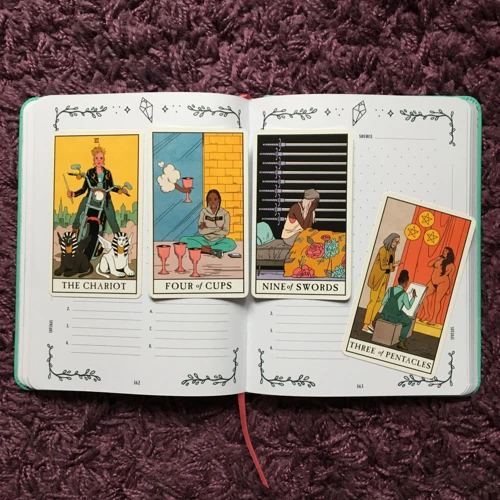
To enhance your understanding and proficiency in using the Past-Present-Future spread, it’s essential to practice with sample readings. By working with sample readings, you can familiarize yourself with the interpretation process and refine your intuition. One effective way to practice is by using a deck of tarot cards and selecting three cards at random to represent the past, present, and future positions. Take your time to analyze each card’s symbolism, imagery, and meanings. Consider how they relate to each other and the overall narrative they create. You can also seek out online resources or tarot communities that provide sample readings for you to study and analyze. By practicing with sample readings, you’ll gain insights into various scenarios, deepen your understanding of the cards, and sharpen your interpretive skills.
Sample Past-Present-Future Spreads
If you’re new to the Past-Present-Future spread, it can be helpful to explore some sample spreads to get a better understanding of how it works. Here are a few examples:
- Sample Spread 1: In this spread, the past card reveals the influence of a previous romantic relationship that ended on a sour note. The present card shows a period of healing and self-reflection, as the individual focuses on personal growth and self-love. The future card indicates the potential for a new and fulfilling romantic connection, where they will find happiness and emotional fulfillment.
- Sample Spread 2: The past card in this spread represents a difficult period of financial instability. The present card shows the individual taking proactive steps to improve their financial situation, such as budgeting and seeking new job opportunities. The future card suggests a positive outcome, with financial stability and abundance on the horizon.
- Sample Spread 3: In this spread, the past card indicates a period of emotional turmoil and conflict within a close relationship. The present card signifies a time of healing and resolution, as the individual works through their emotions and seeks forgiveness. The future card reveals a renewed sense of harmony and deepened connections in their relationships.
These sample spreads demonstrate how the Past-Present-Future spread can provide insights into different aspects of a person’s life, such as relationships, finances, and emotions. Remember, each reading will be unique and tailored to the individual’s specific circumstances. As you practice with sample spreads and gain more experience, you’ll become more adept at interpreting the cards and understanding their messages. Keep an open mind and trust your intuition as you embark on your tarot card reading journey.
Interpretation Examples
Interpreting the cards in a Past-Present-Future spread involves understanding the symbolism and meaning of each card and how they relate to the specific positions. Let’s look at some examples to illustrate how this process works:
- Example 1: In the past position, the Six of Cups suggests a nostalgic and sentimental period of your life when you were immersed in happy memories and connections from your childhood. The Ace of Pentacles in the present position indicates a new opportunity or financial stability that you’re currently experiencing. And in the future position, the Fool card suggests that you’ll be embarking on a new journey or taking a leap of faith in the coming months.
- Example 2: If the Ten of Swords appears in the past position, it signifies a period of major challenges, setbacks, or endings. The Three of Cups in the present position indicates a time of celebration, joy, and deep connections with others. Finally, the Temperance card in the future position suggests that you’ll find balance, harmony, and healing in the future as you navigate through life’s ups and downs.
- Example 3: When the Death card appears in the past position, it represents a significant transformation or ending that you have recently experienced. The Eight of Wands in the present position indicates a period of swift action, progress, and exciting opportunities. And in the future position, the Hierophant suggests that you’ll be seeking spiritual guidance or following traditional structures in your future endeavors.
Remember, these are just examples, and the interpretation of each card can vary based on the specific question or situation. It’s important to trust your intuition and weave together the story that the cards are telling you. As you gain more experience and practice, you’ll develop your own unique style of interpretation.
Developing Your Intuition
Developing your intuition is a crucial skill for tarot readers, as it allows you to tap into your innate wisdom and connect with the deeper meanings behind the cards. Intuition goes beyond simply memorizing card meanings; it involves trusting your instincts and developing a personal connection with the cards. There are several ways to enhance your intuitive abilities in tarot reading. One effective method is to practice regular meditation and mindfulness exercises. This helps quiet the mind, allowing you to connect with your inner voice and access your intuitive insights. Another approach is to keep a tarot journal, where you can record your thoughts, impressions, and intuitive hits during readings. This helps you recognize patterns and develop a deeper understanding of the cards’ symbolism. Additionally, it’s important to cultivate self-trust and confidence in your intuition. Embrace your unique perspective and interpretation of the cards, and don’t be afraid to trust your gut instincts. Over time, with practice and patience, your intuitive abilities will continue to grow, enabling you to provide more insightful and accurate readings.
Conclusion
In conclusion, the Past-Present-Future spread is a powerful tool for gaining insight and guidance in your tarot card readings. By understanding the positions of the past, present, and future cards, you can uncover hidden meanings, patterns, and themes in your life. The past card helps you reflect on the experiences and lessons that have shaped you, while the present card reveals the energies and circumstances surrounding you currently. The future card offers a glimpse into the potential outcomes and possibilities that may unfold. Interpreting the cards requires familiarizing yourself with the meanings of the major and minor arcana cards, as well as the symbolism of each tarot suit. It’s important to trust your intuition and use your tarot reading skills to piece together a cohesive narrative. Remember to consider any challenges that may arise, such as multiple reversed cards or conflicting card meanings, and troubleshoot them accordingly. With practice and patience, you can develop your intuition and become a skilled tarot card reader. So, grab your tarot deck, create a sacred space, and embark on a journey of self-discovery and divination with the Past-Present-Future spread.
Frequently Asked Questions
1. Can the Past-Present-Future spread only be done with tarot cards?
No, the Past-Present-Future spread can be done with any oracle card deck that resonates with you. Tarot cards are commonly used, but you can also use angel cards, lenormand cards, or any other deck that you connect with.
2. How many cards do I need for a Past-Present-Future spread?
The Past-Present-Future spread requires three cards: one for the past, one for the present, and one for the future. These three cards provide a comprehensive snapshot of different aspects of your life.
3. Can I ask specific questions during a Past-Present-Future reading?
Yes, you can ask specific questions. However, the Past-Present-Future spread is designed to provide a broader perspective. If you have specific questions, you may consider using a different spread that is more focused on answering specific inquiries.
4. How often should I do a Past-Present-Future reading?
There is no set frequency for doing a Past-Present-Future reading. You can do it whenever you feel the need for guidance or clarity regarding your past, present, and future. It can be done daily, weekly, or whenever you want deeper insights into your life.
5. Can I do a Past-Present-Future reading for someone else?
Yes, you can perform a Past-Present-Future reading for someone else. Just make sure that you have their permission and that they are open to receiving insights and guidance from the cards.
6. What if I don’t resonate with the messages from the cards?
Not every reading will resonate with you, and that’s okay. Trust your intuition and the connection you have with the cards. If a reading doesn’t feel right, take some time to reflect on it or try another reading later.
7. Can the Future card predict exactly what will happen?
The Future card does not provide an exact prediction of what will happen. It offers potential outcomes based on the current energies and choices. Remember, we have free will, and our actions can influence the future. Use the Future card as guidance rather than a fixed outcome.
8. Can the Past card bring up painful memories?
The Past card may sometimes bring up memories or experiences that are challenging or painful. It is essential to approach these messages with compassion and an open mindset. Use them as an opportunity for healing and growth.
9. Can I use the Past-Present-Future spread for decision-making?
Yes, the Past-Present-Future spread can provide valuable insights for decision-making. By understanding the past and present influences, you can make more informed choices that align with your highest good.
10. How can I enhance my intuition while doing a Past-Present-Future reading?
To enhance your intuition, create a calm and sacred space for your readings, practice regular meditation or grounding exercises, and trust your intuitive feelings when interpreting the cards. The more you practice, the stronger your intuition will become.






